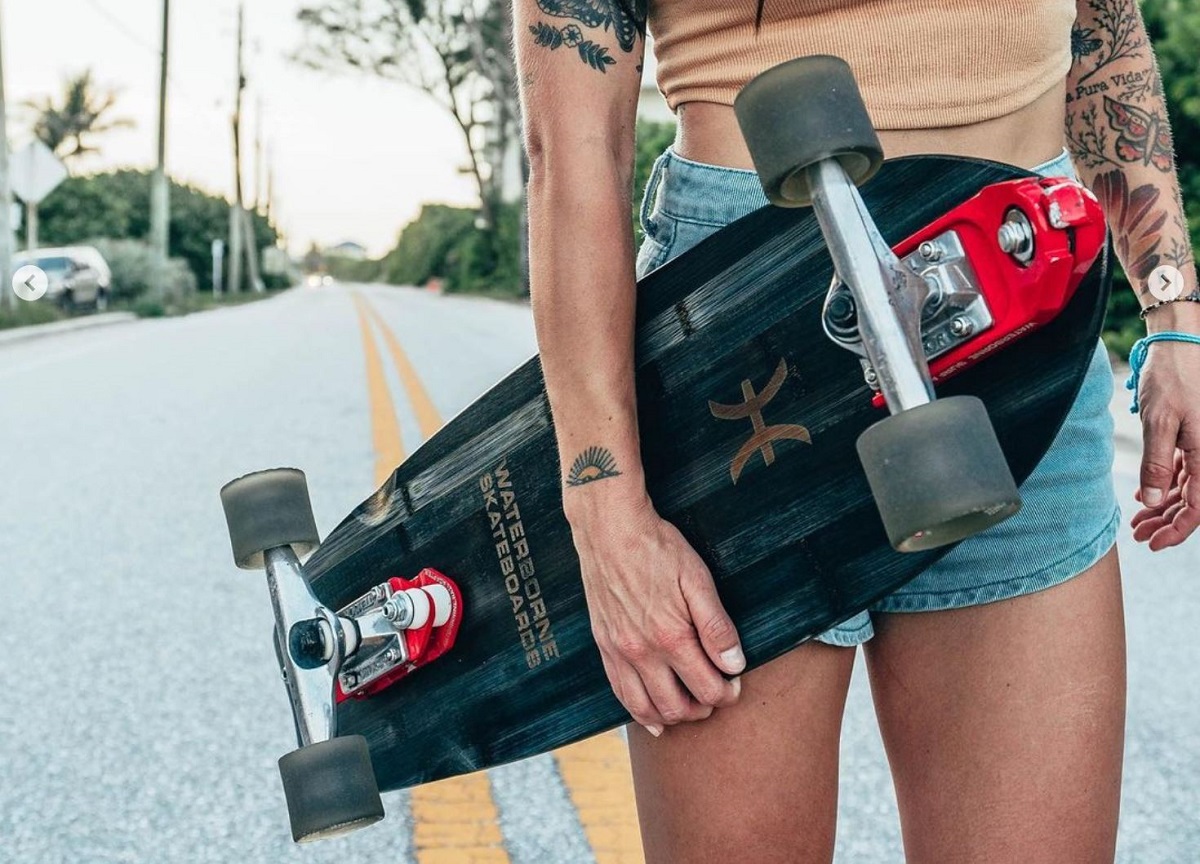This guide covers what, exactly, a surf skate is (also called a “carver”) and why you probably want one! We’re also covering how to install the best Surf Skate Adapter on the market: The Waterborne Skateboards Surf & Rail Adapter FIN System. It works with regular skateboards running standard trucks, and longboards with reverse trucks. Let’s get started!
What is a Surf Skate?

Pictured: Waterborne Surf and Rail Adapter (Blue)
A surf skate is a skateboard or longboard designed specifically for replicating the feeling of surfing and carving ocean waves, but on hard pavement.
There two types of surf skate setups: One that uses two identical trucks with extra-long kingpins and softer bushings to replicate a surf feel. The other uses a specially designed front truck adapter with a split plate to provide both a tighter lean angle and some forward pitch, while the rear truck adapter uses a split rail design to promote tighter rear-steer and roll.
Which Type of Surf Skate is Better?
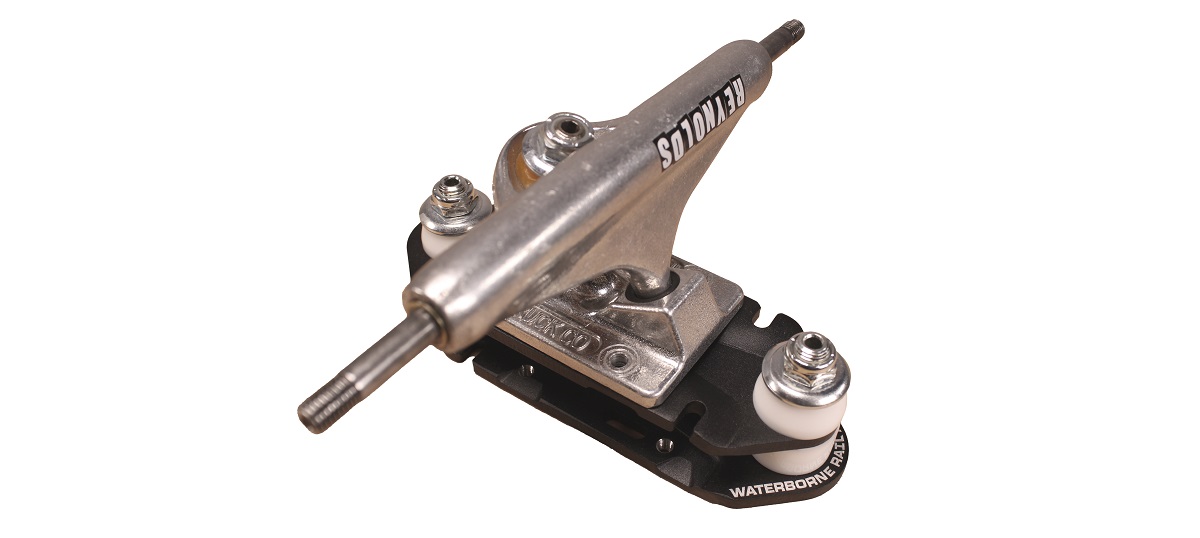
This largely depends on personal preference. Surf skates with identical trucks provide a more conventional skating ride style, albeit with a tighter turning radius. Surf and rail adapters provide both a tighter turning radius, and a slight downward pitch and lateral rolling sensation when leaning into turns. Some say this adapter setup provides a more carve-y surf feel.
If you want to turn your existing skateboard or longboard into a surf skate, it’s the surf-and-rail adapter option that we’ll cover installing below.
What’s a Surf Skate For?
Surf skaters are designed specifically for cruising and carving. Their tight turning radius and highly responsive carving ability make them great for riding long distances, especially in crowded areas.
Can You Do Tricks on a Surf Skate?
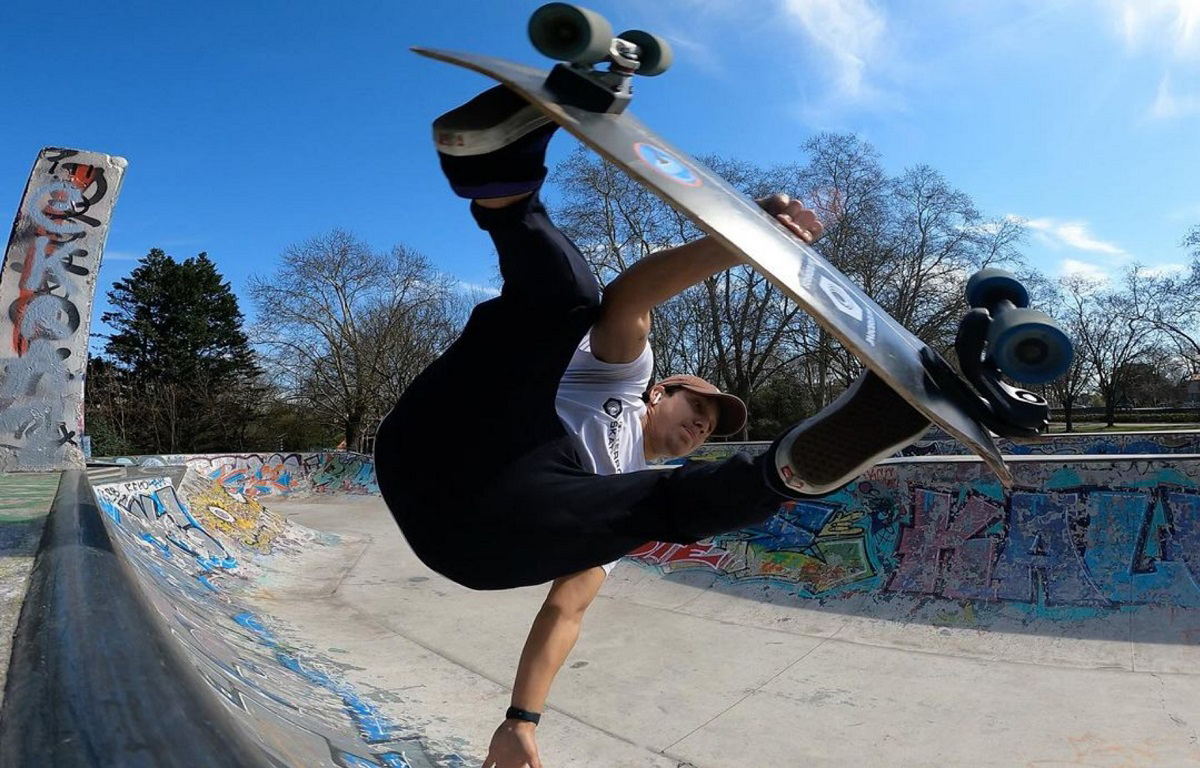
Re-configuring a skateboard as a surf skate will inhibit some trick potential. You’ll have a tougher time with fine technical control, so it’s best not to perform street tricks or grinds. You will, however, still be able to ride vert, drop into pipes and bowls, and run lines pumping through a park.
Likewise, re-configuring a longboard as a surf skate will promote better turning, but you’ll also reduce the board’s ability to slide. But you may find it easier to control your longboard’s direction while performing dance tricks with a surf skate setup.
In the end, surf skating is all about cruising, carving, and surfing on land.
What’s The Benefit of a Surf Skate?

Besides enjoying a far more enjoyable carving ride style, the up-and-down motion of the front truck allows you to maintain momentum without pushing. Simply pushing into left and right turns — causing the nose of the board to pump and down — will allow you to gain speed as you change directions.
With enough confidence, you can generally roll along flat pavement without ever having push!
How to Install a Surf Skate
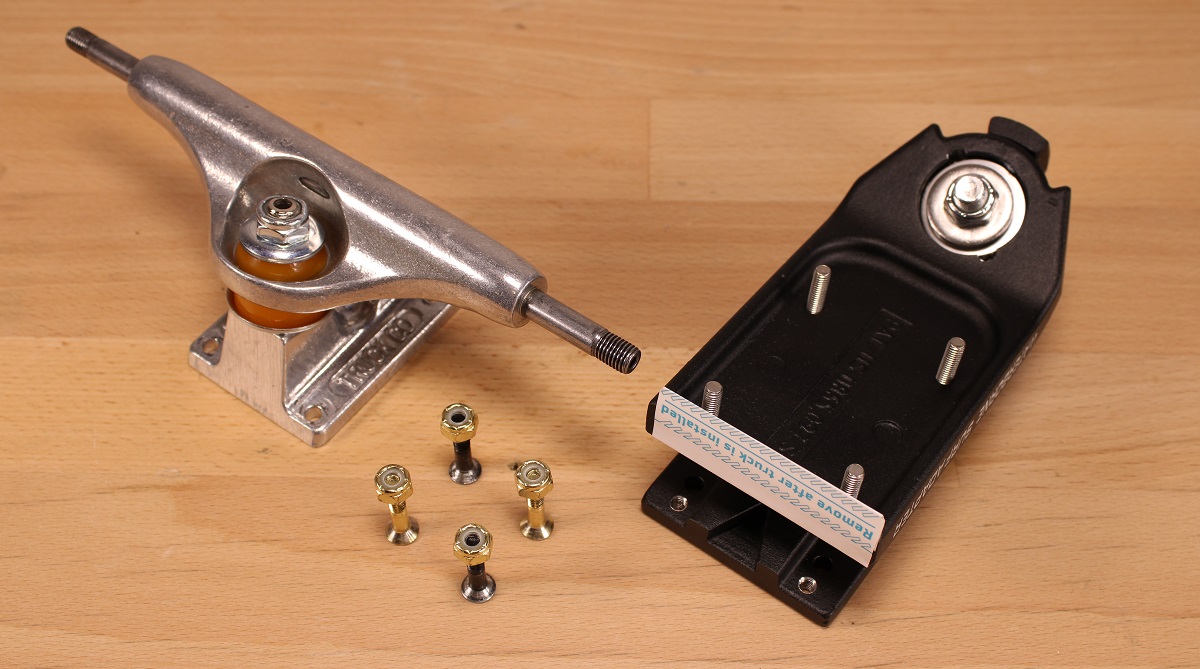
Installing a surf skate adapter is easy! You can convert any skateboard and longboard to a surf skater. We’ll cover both in these instructions. We’re using the Waterborne Skateboards Surf and Rail Adapter for these instructions.
Grab these tools before starting:
- Skate T-Tool (or 3/8″, 9/16″, 1/2″ sockets)
- 3/8″ open-end wrench
- Phillips Screwdriver
Let’s begin!
1. Remove Both Trucks
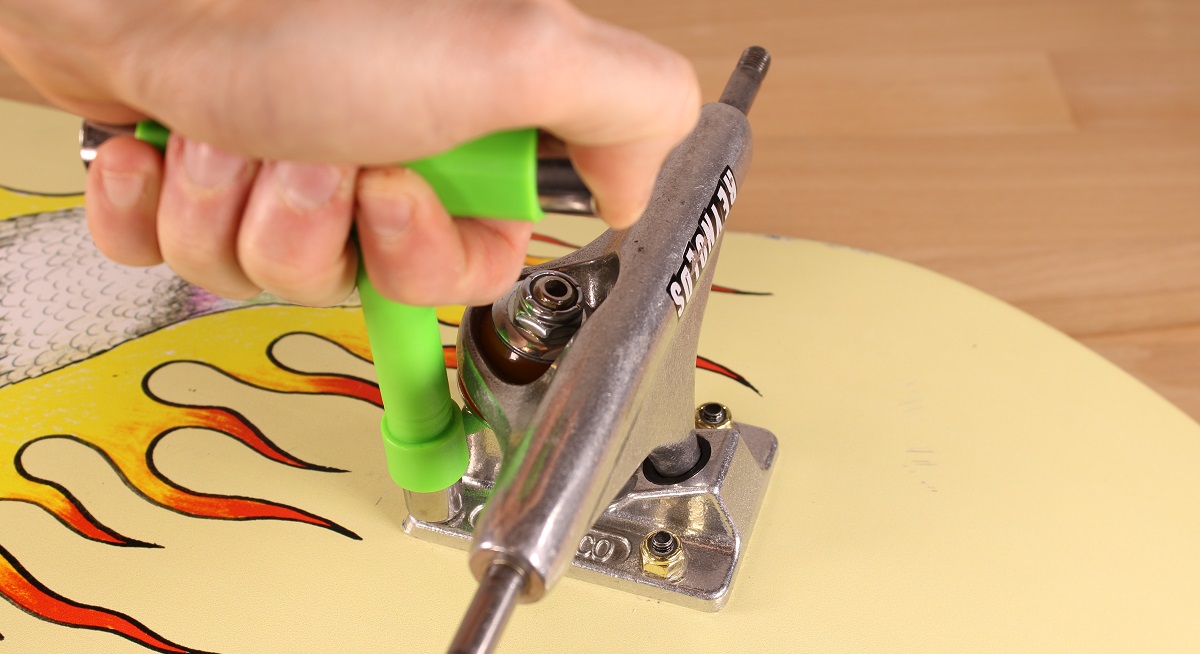
Remove your deck’s front and rear trucks. You’ll need a 3/8″ socket to remove the nylon nuts holding the truck bolts. You’ll also need a screwdriver to hold the heads of each truck bolt, to prevent them from spinning when removing each nut.
NOTE: We recommend investing in a Skate T Tool if you don’t already have one. It has all the sockets required for this installation, and it makes swapping wheels and trucks a snap.
2. Bolt Truck to Front Surf Adapter

The front surf adapter has truck bolts preinstalled. These four bolts align with the truck’s base plate, juas like the bolts on your deck.
Flip the surf adapter upside down, and seat the truck on the adapter via the four bolts. For standard trucks, ensure the kingpin on the truck is facing toward the rear of the adapter.
NOTE: For longboards and reverse trucks, the kingpin should face the front of the adapter.

Collect 4 of the 3/8″ nylon nuts provided in the surf adapter kit, and secure the truck to the adapter with them.
NOTE: The adapter ships with a sticker holding the truck bolts inside the adapter plate. This keeps the bolts in grooves that prevent them from spinning when installing the truck’s nuts. Do not remove this sticker until the truck is secured to the adapter.
3. Bolt Surf Adapter to Board
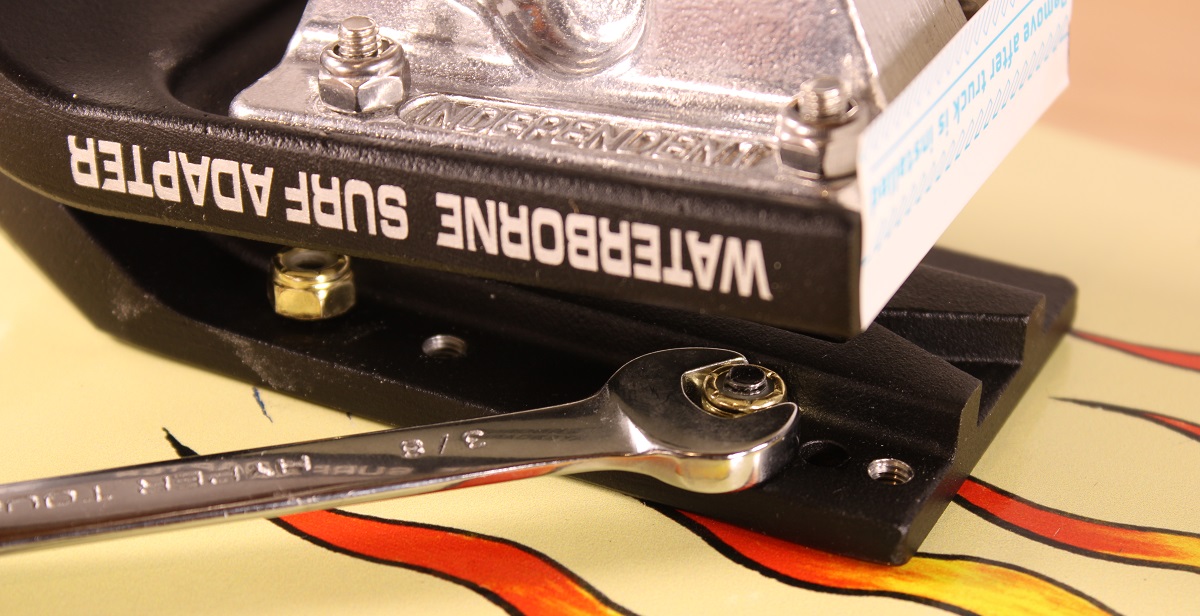
After securing the front truck to the adapter, secure the assembly to the longboard or skate deck. Ensure the rounded nose of the adapter is facing the front of the board. Reuse your deck’s original truck bolts and nylon nuts for this step.
NOTE: You’ll need an open-end 3/8″ wrench to tighten the nylon nuts on the adapter. While tightening the nuts, use a screwdriver to hold the bolt head on the topside of the deck, to prevent them from spinning.
4. Bolt Rear Truck to Surf Rail
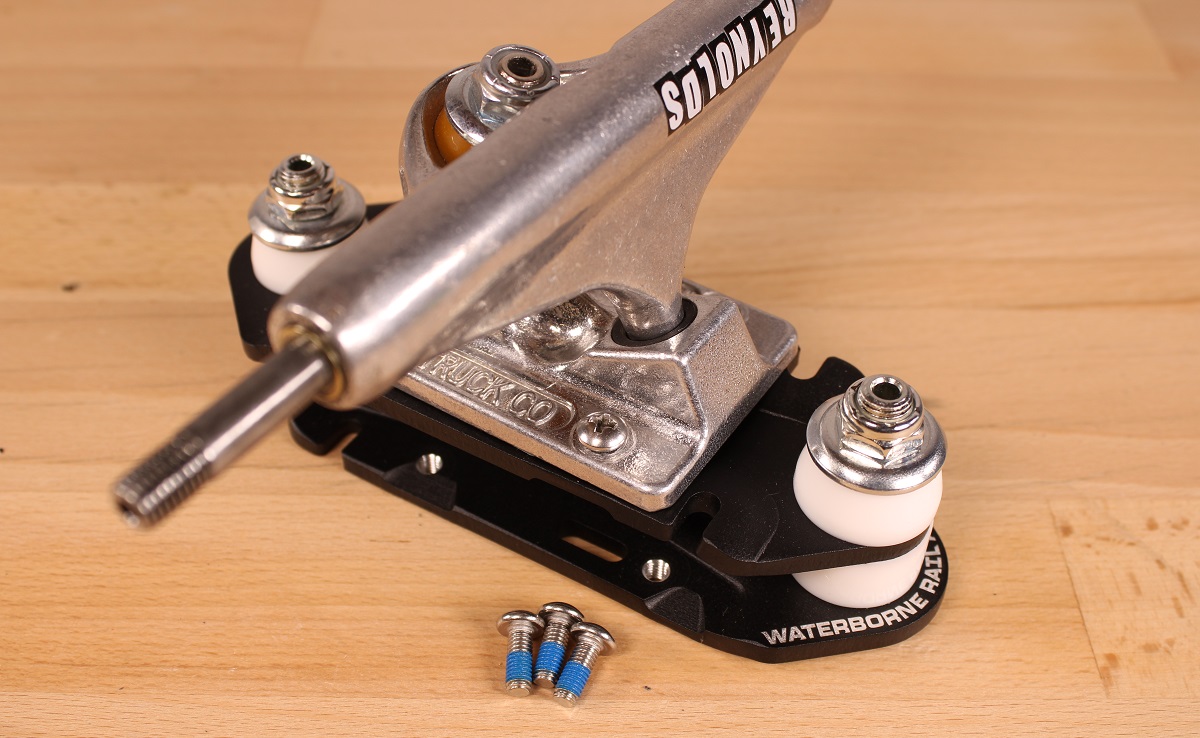
The surf rail has threaded holes machined into each plate, negating the need for nylon nuts. Collect the Phillips-head bolts of the appropriate length from the adapter kit to secure the rear truck to the rail.
Ensure the surf rail is oriented correctly: For standard trucks, the kingpin should face away from the bottom plate labelled “WATERBORNE RAIL ADAPTER,” as shown above. For reverse trucks and longboards, the kingpin should face toward the label.
NOTE: There are bolts of various lengths provided for this step, to accommodate different base plate thicknesses. Use bolts that are just long enough to thread through your truck’s base plate and the surf rail, without poking too far out underneath.
5. Bolt Surf Rail to Board
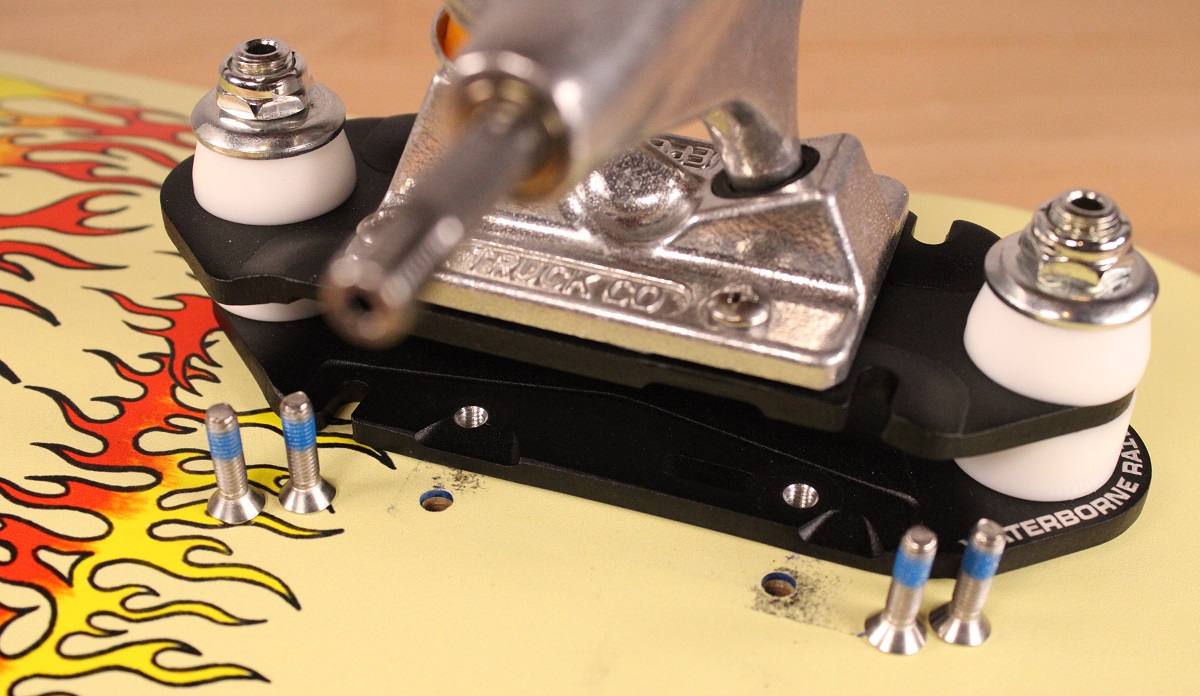
With the rear truck bolted to the surf rail, orient the assembly so the “WATERBORNE RAIL ADAPTER” label is facing the rear of the deck. Bolt the rail to the deck using the bolts provided in the adapter kit.
NOTE: Most skate and longboard decks use countersunk bolts. If your board isn’t drilled with countersinks, use the button-head bolts provided in the kit instead.
6. Verify Correct Orientation for Longboards

Again note that reverse kingpins and longboard trucks are installed opposite, relative to the instructions above. For this setup, verify your components are correctly oriented, as pictured, before riding.
Your Surf Skate Install is Complete!

Your surf skater’s ready to roll! Note that with the added leverage of a surf skate setup, you may need to tighten your trucks’ bushings to promote some extra stability. This may also be necessary if you experience wheel wobble at high speeds.
(It Might Be Time for New Wheels, Too)
With the conversion to a surf skate, your existing skate or longboard wheels might not be ideal — often, they’re too small to take full advantage of the carving ride style of these boards.
Check out the guide to skate wheels, or see the guide to longboard wheels to pick better wheels for either setup.

